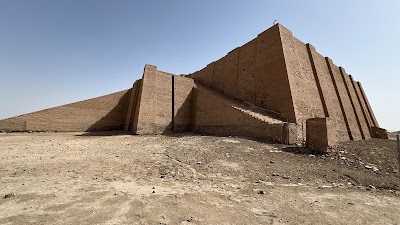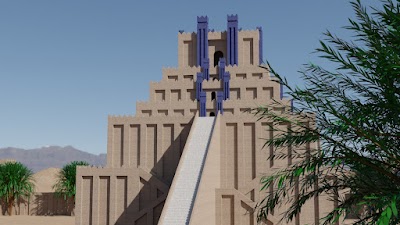Processional Way (طريق المواكب)
Overview
Discovering the Processional Way of Babylon
The Processional Way in Babylon, Iraq, was not just a road; it was a grand and symbolic thoroughfare that played a vital role in the city's cultural and ceremonial life. Constructed during the reign of King Nebuchadnezzar II in the 6th century BCE, this magnificent pathway was designed to showcase the splendor of Babylon and facilitate religious processions, particularly during the significant New Year Festival.
Stretching over half a mile, the Processional Way was wide and elegantly paved with large stone slabs, meticulously imported from afar. These impressive stones were arranged to withstand the heavy traffic of ceremonial processions, including the passage of colossal statues representing gods and goddesses. The road led southward from the city's northern wall, passing through the iconic Ishtar Gate and culminating at the Temple of Marduk, Babylon’s chief deity, thus connecting the city's sacred spaces.
The Ishtar Gate: An Architectural Marvel
As the grand entrance to the Processional Way, the Ishtar Gate stands out as an architectural masterpiece. Constructed from glazed bricks, it was adorned with vivid images of dragons, bulls, and lions—symbols deeply rooted in Babylonian mythology. Its striking blue color shimmered in the sunlight, captivating all who beheld it. The gate, towering approximately 50 feet, was designed not only to impress visitors but to showcase Babylon's might and divine favor.
On either side of the Processional Way, intricately designed walls were decorated with images of 120 lions, considered sacred animals representing the goddess Ishtar. Crafted using glazed bricks, these majestic lions formed an awe-inspiring guard of honor for the processions. The walls themselves were built with mud bricks, a common construction material in Mesopotamia, providing both durability and flexibility to withstand earthquakes common to the region.
A Testament to Engineering and Artistry
The construction of the Processional Way required extensive planning and resources, engaging thousands of workers from Babylon and surrounding areas. Skilled artisans, brickmakers, laborers, and craftsmen joined forces to bring this monumental project to life. The coordination needed to transport materials and execute the design showcased the advanced organizational skills of the Babylonians. Beyond its religious and ceremonial functions, the Processional Way highlighted the engineering prowess and artistic capabilities of this remarkable civilization.
For the people of Babylon, the Processional Way was more than a mere pathway; it was a journey imbued with spiritual significance. During the New Year Festival, statues of deities, including Marduk, were paraded along this grand road as part of elaborate rituals aimed at ensuring the city's prosperity and well-being. Spectators, from priests to royal family members and common citizens, lined the route, participating in this collective spiritual experience.
Legacy and Archaeological Discoveries
Though the city of Babylon and its Processional Way experienced decline after the Persian conquest in the 6th century BCE, the grandeur and historical importance of the pathway have persisted through archaeological discoveries. Excavations led by Robert Koldewey in the early 20th century unearthed valuable insights about its construction and significance, allowing modern generations to appreciate the marvels of ancient Babylon.
Today, the Processional Way remains a symbol of the rich cultural and architectural legacy of Babylon. Its careful construction, artistic embellishments, and profound religious importance reflect the sophistication and spiritual depth of this ancient civilization. Visitors can explore remnants and reconstructions of this historical pathway in museums, offering a captivating glimpse into the grandeur that once defined the Processional Way of Babylon.









